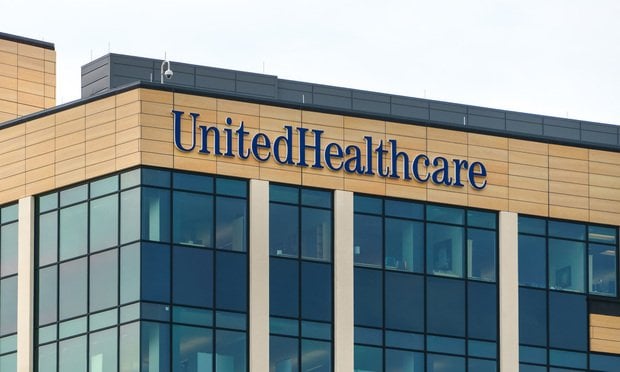 UnitedHealthcare took in collected $24.4 billion in adjusted premiums during 2017 and paid out $86.8 million in rebates in the large-employer market. (Photo: Shutterstock)
UnitedHealthcare took in collected $24.4 billion in adjusted premiums during 2017 and paid out $86.8 million in rebates in the large-employer market. (Photo: Shutterstock)
A requirement of the Affordable Care Act is that insurers pay rebates to customers if they fail to spend specific percentages of premium revenue on medical care and quality improvement programs. And in 2017, UnitedHealthcare ended up providing rebates to both large and small employers that were approximately 40 percent higher than the previous year, totaling some $146.2 million.
As reported by the Minneapolis Star Tribune, new data from Pennsylvania-based market research firm Mark Farrah Associates finds that in 2016, UnitedHealthcare provided rebates of about $104.3 million, compared with 2017's $146.2 million—in line with a broader trend of slightly improved profitability for carriers in 2017.
Related: HHS releases medical loss ratio regulations
The rebate requirement is tied by the ACA to an insurer's medical loss ratio, which caps the share of premium revenue that an insurer can keep for profit. Insurers in the large-group market are obligated to spend 85 percent of premium revenue on health care and quality improvement work; in the small-group and individual markets, the requirement is 80 percent. When the ratio does not meet those standards, the ACA obliges insurers to rebate the difference back to consumers according to a calculation that factors financial results over several years.
UnitedHealthcare took in collected $24.4 billion in adjusted premiums during 2017, according to the Mark Farrah Associates report, and paid out $86.8 million in rebates in the large-employer market, in which its weighted average medical loss ratio (MLR) was 87.2 percent; in the small-group market, adjusted premiums totaled more than $12.5 billion and rebates paid totaled $59.4 million. While its MLR was better than average in the large-employer market, the calculation is made on a state-by-state basis, so it still had to pay rebates.
Rebates amounted to less than one percent of premium revenue in both markets. In the individual market, UnitedHealthcare didn't pay much out in rebates, since it wasn't a major source of coverage. United and other carriers “all had affiliate plans with MLRs at the state level below the 85 percent standard leading to the rebates due,” according to the report, which also said that in the small-group market UnitedHealthcare's overall MLR was 82.5 percent.
Figures from the report indicate that across all three markets, the sum of rebates from all insurance companies rose from $446 million in 2016 to $709 million in 2017. UnitedHealthcare saw a slower one-year rate of increase than in the overall market.
“Overall, rebates paid to consumers continue to be a small portion of industry premiums although total rebate dollars increased by 59 percent over 2016,” the report concludes. “With a limited number of exceptions, rebates due to customers were generally not financially material and have had a minimal overall impact on insurance companies.”
For its part, UnitedHealthcare said in a statement, “Our focus is on providing our customers with competitively priced products that deliver the best value for their health care dollar. We do not pay rebates in the vast majority of cases.”
Blue Cross and Blue Shield of Minnesota paid rebates of $19.6 million in the individual market during 2017, the fourth-highest among all carriers in that market. It eliminated individual market plans that in 2016 were unprofitable; in 2017, its remaining plans were profitable and its 2016 losses were not part of the rebate calculation, so its assessed rebates rose.
Read more:
- MLR has saved consumers $5 billion
- Low 2016 individual health margins trimmed insurers' rebate bills
- 7 ways brokers can be excluded from MLR
© 2025 ALM Global, LLC, All Rights Reserved. Request academic re-use from www.copyright.com. All other uses, submit a request to [email protected]. For more information visit Asset & Logo Licensing.







